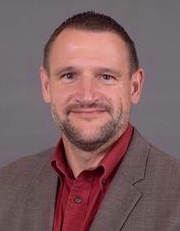University of Cincinnati Infrastructure Institute (UCII)
The University of Cincinnati Infrastructure Institute (UCII), formed in 1989, is focused on the development of nondestructive testing and evaluation technologies for the purposes of condition assessment and health monitoring of civil infrastructure systems. UCII consists of an integrated, multi-disciplinary team of Civil, Electrical, Computer, Mechanical, and Materials engineers from a broad cross-section of the faculty at the University of Cincinnati's College of Engineering.
In addition, UCII draws on a wide variety of laboratory and analytic facilities at the University as well as a number of full-scale field research sites located off-campus. Since its inception, UCII has been involved in the testing and evaluation of several structures including more than 60 bridges in the state of Ohio. UCII has developed and applied a number of unique experimental and analytic tools in the evaluation of both laboratory model and full-scale civil infrastructure systems including: modal testing, truckload testing, and field calibrated finite element modeling.
A major thrust of UCII research has been to conduct a comprehensive scientific study of critical bridge responses and their corresponding causative effects (including traffic, the environment, and damage, deterioration, and defects) during fabrication and construction, through in-service use, and up to old age. Such objective, quantitative information and assessments will provide a critical understanding of overall life cycle behavior, performance, and cost of these important links in our transportation system. This understanding will permit more efficient and improved designs for new structures, as well as better management of the large numbers existing structures in our current inventories.
The work of UCII has been funded and supported by numerous agencies including the Ohio Department of Transportation, the Federal Highway Administration, the National Science Foundation, and NASA, and several companies.
The University of Cincinnati Infrastructure Institute (UCII) has over twenty years of experience in the research of assessment technologies for structures, including:
- Loads and natural hazards (service, fatigue, strength, and extreme-event limit states)
- Nondestructive evaluation via controlled truckload and modal testing
- Long-term monitoring and on-line prediction of needed maintenance
- Advanced on-site instrumentation systems and smart materials
- Destructive testing, damage process mechanisms and evaluation of remaining service life
- Characterization of performance under extreme events and acceptable risk
- Interdependence and collocation of infrastructure systems
- Geographical information systems
- Social and economic effects
Given the synergy of the on-going research and test specimens, the expressed objective for UCII research is the systematic and integrated development of an optimal field testing regimen and a long-term on-site health monitor for highway bridges with a major emphasis on steel-stringer bridges. While the concept of an intelligent structure is not new, many of the issues that need to be resolved are not all recognized. Further, real-life implementation of well-researched concepts is still a major challenge.
The final product is envisioned as an on-site continuous health monitor which:
- Acquires sensor data at variable sampling speeds
- Communicates with peripheral devices such as a video camera or traffic scale
- Provides a graphical interface via Internet and phone line with a remote engineer
- Performs simple range and other checks for sensor faults
- Identifies parameters for a simple beam or grid model of the bridge
- Detects any structural degradation or damage via thresholds
- Has an open architecture for future expansion or connection.
The University of Cincinnati Infrastructure Institute (UCII) research with instrumented bridge monitoring began in 1989 when displacement sensors were installed beneath a reinforced concrete slab bridge. The sensors measured the displacement of bridge for truck loads. UCII researchers further explored bridge instrumentation related issues in several subsequent research projects. In 1994, UCII researchers were given the opportunity to conduct a rigorous scientific investigation of issues associated with the design and implementation of a bridge monitoring system. A multi-disciplinary team of civil and electrical engineers were used for the project as it presented a need for a broad range of expertise.
A major thrust of this project was to conduct a comprehensive scientific study of the critical bridge responses and their corresponding causative effects for a typical steel-stringer bridge during fabrication and construction. A bridge's actual response and behavior during construction, combined with environmental effects is an essential component for understanding its overall life cycle behavior and performance. By examining a structure only after it is built, critical information about its stress state can only be estimated. Such information may prove critical to understanding the root causes of various defect, deterioration and damage mechanisms.
This research is meant to complement and extend the work currently funded by the Ohio Department of Transportation, the Federal Highway Administration, the National Science Foundation and other agencies through the University of Cincinnati Infrastructure Institute (UCII). The UCII researchers have developed a rational, global condition assessment technique, which addresses the conceptualization and measurement of several unknowns for bridges, which include:
- A lack of quantitative knowledge on the as-built state parameters (e.g., initial stresses, strains and displacements, local and global stiffness) and their variation over time.
- A lack of clear and quantitative definitions for the performance parameters (e.g., functionality, serviceability, safety, lifecycle cost, etc.) and relationships between the state and performance parameters; and,
- A lack of a clear and complete understanding of the phenomena which influence the state-of-force in a bridge; which lead to changes in state parameters; and/or which lead to a decrease in performance.
Fifteen steel-stringer, four steel truss, two reinforced concrete slab, and one fiber-reinforced polymer (FRP) deck on steel bridge have been tested nondestructively by a variety of techniques, while several of which were tested numerous times. Three decommissioned bridges (two trusses and one stringer bridge) were further tested to damage and failure. A global NDE method was developed based on the structural identification concept, and employing truckload testing, modal impact testing, and instrumented monitoring as its principal experimental tools. The test results are transformed to modal flexibility, which has been demonstrated to be a conceptual, quantitative, comprehensive, and damage-sensitive signature [Rubin, 1983]. Flexibility also provides a conceptual condition index, since it may be used to conveniently obtain the deflected shapes of a bridge under any loading pattern. Another such conceptual signature is the fundamental structural parameter of the unit influence line, the characteristic response at any instrumented bridge node due to the position of a unit load. Both testing approaches will provide best results under controlled loading conditions, which can be performed on a regular basis or in response to suspected or known damage. Ambient monitoring is conducted during the interim to track, document, and alert the bridge engineer to any gradual or sudden changes in these or component damage indices.
The scope and complexity of bridge condition assessment, however, does not permit a simplistic, reductional formulation. A holistic approach has been followed in the design and implementation of UCII research, and includes:
- The strategies, concepts, and tools needed to confidently measure bridge state parameters;
- The lessons learned from instrumented health-monitoring of actual bridge specimens;
- The hardware, software, and analytical and experimental expertise required for linearized structural identification of complex bridges; and,
- The concept of bridge-type-specific behavior mechanisms that have so far been identified for steel-stringer bridges.
Based on the principal attributes that influence state and performance, it is possible to rationally classify steel-stringer bridges into several groups of like behavior, each of which can then be represented through a statistical population of bridges. Once the statistical population is rigorously tested and studied, practical, type-specific global condition assessment procedures can then be developed for the whole group. The UCII researchers have extensively tested and monitored three steel-stringer bridges in Cincinnati and have just contracted with ODOT to test another thirty-four steel-stringer bridges throughout Ohio. Twenty-four of these bridges to be tested will be essentially in good condition but will cover a wide range of structural parameters, including number and length of spans, skew, non/composite design, integral/stub abutment, etc. in order for a more diverse database. The other ten bridges to be tested will be the lowest rated bridges of greatest concern in the state of Ohio.
Director

Arthur J Helmicki
Assoc Dean, CEAS - Graduate Studies
816 MANTEI

Victor Hunt
Assoc Professor - Research (F2), CEAS - Electrical and Computer Engineeri
721 MANTEI
Structural testing and monitoring, with extensive background with highway bridges. Environmental monitoring and alerting, with specific application to icing and snow accumulation (and shedding) on highway features. Unmanned aircraft vehicles (UAVs) flights and applications for the DOT, with particular results in photogrammetic models, surveying, structural and facility inspection, video monitoring and processing of traffic parameters, event documentation and social networking and planning, etc.

James A. Swanson
Associate Professor, CEAS - Civil Eng
765D Baldwin Hall